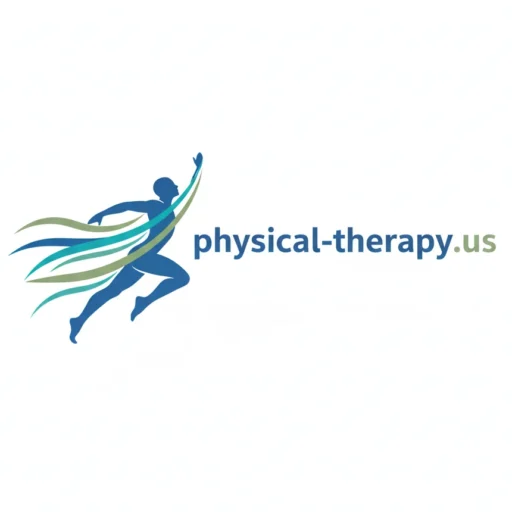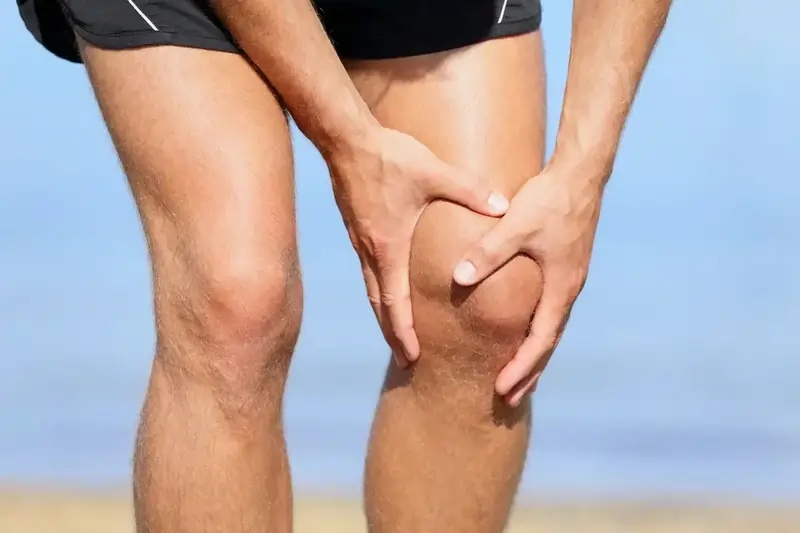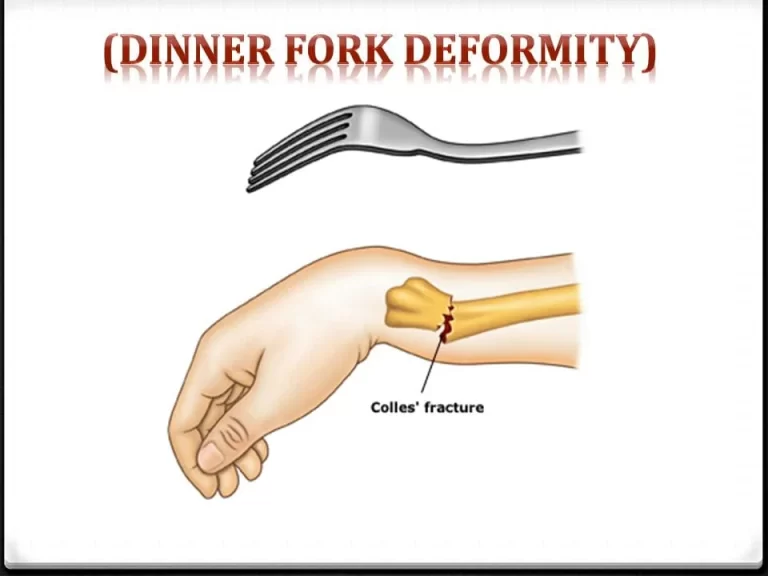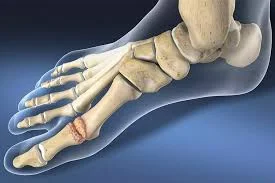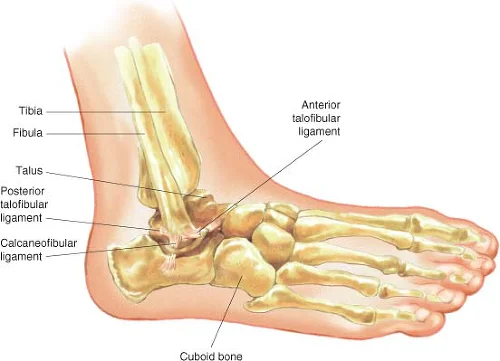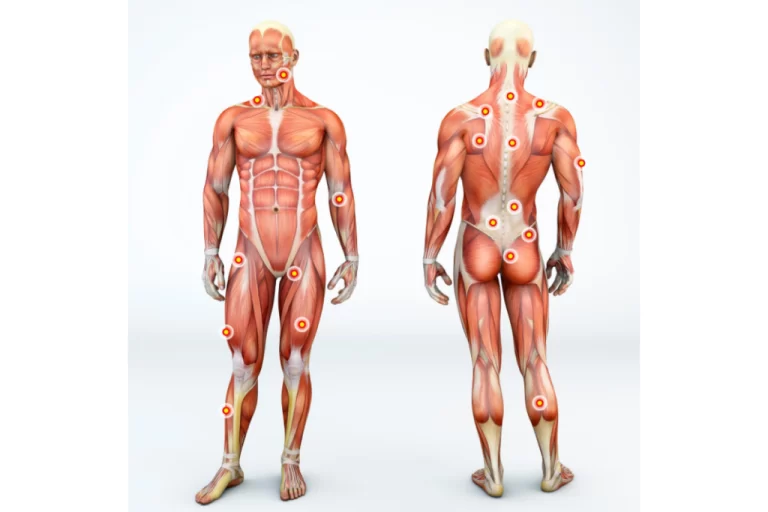How Long Does Knee Pain Typically Last?
Introduction
Knee pain is a prevalent issue that can impact individuals of all ages, from young children to the elderly. Overuse, chronic illnesses, including arthritis, and injuries are some of the common causes. From minor pain, like a minor sprain, to serious and incapacitating injuries, such as fractures or torn ligaments, this pain can drastically impair everyday activities, mobility, and general quality of life. Repetitive strain from physical activity can cause knee pain in certain people, while degenerative joint disorders can cause it in others. The inability to walk, run, climb stairs, or perform basic tasks can be caused by knee pain, emphasizing the importance of early intervention and treatment.
Professional assessment is necessary, though, if the pain is severe or chronic and lasts more than a few weeks or is accompanied by other worrisome symptoms. Understanding a typical healing period makes it easier to set achievable goals. While minor injuries could heal in a few weeks, more serious disorders like ligament tears or surgery might take months to heal.
Rest, ice, compression, and elevation (RICE) combined with over-the-counter painkillers can help manage a lot of knee pain cases at home. Surgical procedures, injections, or physical therapy may be required for more severe cases or chronic pain. Treating knee pain as soon as possible might prevent further damage or injury to the knee joint. Daily activities and quality of life can be greatly impacted by persistent knee pain. Being aware of the length of time and possible effects enables proactive steps to reduce interruptions.
Having reasonable expectations and making sure the right care is provided requires an understanding of the typical healing period for knee pain. The length of recovery might vary greatly based on the extent of the damage, the kind of therapy received, and personal characteristics, including age, general health, and compliance with rehabilitation plans.
Recovery time for small injuries like sprains may be a few days to weeks, but it may take many months for more serious problems like ligament tears or knee surgery to heal fully. You may actively aid your recuperation by learning about typical knee injuries, identifying variables that influence healing, and using tried-and-true methods like physical therapy, strengthening exercises, and adequate rest. In addition to facilitating a quicker return to your regular activities, following these actions lowers your risk of long-term consequences and encourages a pain-free, healthier lifestyle.
How much time does it take to heal knee pain?
The nature and severity of the damage can have a significant impact on how long it takes to recover from knee discomfort. The following are general recovery schedules for various knee problems:
Minor Sprains and Strains
Acute knee pain, especially following trauma, is frequently caused by fractures, sprains, ligament tears, or meniscus tears. Swelling, severe pain, and difficulty moving the knee are possible complications of these injuries.
Sprains can result from common sports accidents and falls. Direct force or twisting, or bending the knee beyond its typical range, can cause sprains, which cause pain in the knee due to stretched or torn ligaments. Common causes include repetitive actions, falls, and sports injuries. Other factors that may lead to knee pain include age, weight, and underlying medical conditions like arthritis.
Ligament tears: A common cause of knee pain is ligament tears, which can be caused by sudden twisting motions, hard hits, or awkward landings. The four major ligaments that give the knee stability may be impacted by these diseases. Anterior cruciate ligament (ACL) injuries are especially frequent and frequently occur as a result of sporting activities that require abrupt stops, direction changes, or pivoting.
Acute pain can also be caused by fractures of the patella (kneecap), tibia, or femur, which are bones near the knee. Direct trauma can cause fractured bones or fractures in the knee joint, such as falls, accidents, or sports injuries. They may also be caused by underlying diseases that weaken bones, such as osteoporosis. Fractures, especially to the kneecap (patella), can result from falling onto the knee, especially on hard surfaces.
- Recovery Time: 1–3 weeks with appropriate care.
- What to Do: RICE (rest, ice, compression, and elevation) works well for minor wounds. Recovery can be accelerated by performing mild strengthening and stretching activities.
Moderate Ligament Injuries
Patellofemoral pain (runner’s knee)
The condition known as “runner’s knee” or patellofemoral pain syndrome can result from the kneecap (patella) becoming out of position with the muscles that surround the hip and knee. This occurs because the kneecap must properly track in the femur’s (the thigh bone’s) groove to move smoothly and avoid pain and injury.
The area directly behind or next to the kneecap is typically where anterior knee pain occurs. It is subsequently referred to by physicians as patellofemoral pain or patellofemoral pain syndrome (PFPS). The chance of developing patellofemoral pain increases following knee surgery. This is particularly relevant when using a graft of one’s patellar tendon to repair the anterior cruciate ligament.
Tendinitis
Injuries, poor biomechanics, or excessive use can all lead to tendinitis in women. It frequently results in pain and tenderness, particularly when the affected joint or limb is moved. Tendinitis can result from repetitive activities, overuse, or tension.
Bursitis
One inflammatory disease that affects the bursae, small, fluid-filled sacs that cushion joints, is bursitis. These bursae, which are found close to joints, serve as lubricants and lessen friction between tendons, muscles, and bones. Bursitis causes pain and inflammation in the affected area and is frequently caused by overuse, trauma, or repetitive motions. Localized soreness and pain.
Prolonged pressure on the knee, mainly in the kneeling position, increases the pain. The condition known as bursitis is characterized by inflammation of the fluid-filled sacs (bursae) surrounding your joints, which results in pain, swelling, and soreness. Inflamed bursae can make it difficult to move the affected joint since they serve as cushions between bones, tendons, and muscles. When bursae become inflamed, bursitis develops.
Near joints that undergo a lot of repeated motion, bursitis frequently develops. The usual course of treatment is to rest the injured joint and shield it from additional stress. Reducing inflammation and accelerating recovery can be achieved with rest, ice, and avoiding activities that worsen the disease. Over-the-counter medications such as ibuprofen or naproxen, or even physical therapy, may be suggested in certain situations.
- Recovery Duration: 4–12 weeks.
- What to Do: Regaining strength and movement requires physiotherapy. Before you’re completely recovered, stay away from high-impact activities.
Severe Knee Injuries
Arthritis
Joint pain and inflammation are symptoms of arthritis. Arthritis in the knee is frequent.
Osteoarthritis.
Use-related joint pain that may decrease with rest. The pain may be worse at night for some people in the final stages of the illness. Pain may be general or localized. It normally lasts no more than thirty minutes and happens in the morning or after a time of relaxation.
Alterations to the joints that may restrict joint motion. Swelling of the joint and surrounding tissues, particularly with prolonged use or activity in that location. Changes in the joint’s range of motion. Experiencing the sensation of a loose or unstable joint.
Rheumatoid arthritis.
Osteoarthritis is more frequent than rheumatoid arthritis. Some people have both. This may eventually result in deformity, which is a painful swelling that can cause joints to flex incorrectly. Rheumatoid arthritis’s inflammation can harm other bodily parts as well. Treatment options have significantly increased because of new medications. However, rheumatoid arthritis can still raise the risk of heart disease and cause long-term harm. Involvement of symmetrical joints, such as the knees.
- Stiffness in the morning that lasts longer than half an hour.
- Redness, warmth, and swelling surrounding the joint.
- Exhaustion as well as systemic signs (weight loss, fever).
- Abnormalities of the joints throughout time.
Although it is more prevalent in women and the elderly, rheumatoid arthritis (RA) can affect people of any age, gender, or other characteristics. Although the condition may appear more often in middle age, it can also strike young adults (early-onset rheumatoid arthritis) and children (juvenile idiopathic arthritis).
- Recovery duration: Three to six months, or longer if surgery is necessary.
- What to Do: To fully recover from major tears, intensive rehabilitation may be required after surgery.
How much time does it take to heal from typical knee injuries?
Recovery Time for Sprained Knees
When the ligaments surrounding the knee are overstretched or damaged, sprains happen.
- Mild Grade 1 Sprain: One to two weeks of rest and mild exercise are necessary for recovery.
- Grade 2 Sprain (Moderate): Recovery should take three to six weeks, and rehabilitation is frequently necessary.
- Grade 3 Sprain (Severe): May require surgery in certain situations and take 8–12 weeks.
Tips for Healing:
- For emergency care, use the RICE approach.
- Return to weight-bearing activities gradually while being supervised by a physiotherapist.
Time to Heal a Sprained Knee
Depending on how severe they are, sprained knees can heal in a few weeks to many months.
Key Factors Affecting Recovery Time:
- Rehabilitation Efforts: Following a physiotherapy regimen can hasten the healing process.
- Age and General condition: People who are younger and in better condition recover more quickly.
What You Can Do:
- For support throughout the healing period, put on a knee brace.
After a fall, how many days does it take for the pain in the knee to go away?
Knee pain following a fall is often due to bruising, swelling, or damage to tiny ligaments.
Recovery Timeline:
- Minor Injuries: Swelling and pain usually go away in a week or two.
- Moderate Injuries: With the right care and rest, recovery could take three to six weeks.
- Severe Injuries: Recovery could take three to six months if the fall resulted in a fracture or serious ligament damage.
Signs You Need Medical Attention:
- Inflammation or edema continuing for more than two weeks.
- Unable to support the knee with weight.
- Localized, intense pain that doesn’t go away.
What’s the typical recovery time for injuries with a damaged knee ligament?
One of the most dangerous knee injuries is a torn ligament, like the medial collateral ligament (MCL) or the anterior cruciate ligament (ACL), which frequently takes a long time to heal.
ACL Tears:
- Physical treatment for three to six months is advised for non-surgical rehabilitation.
- The recovery period following surgery can vary from six to twelve months, depending on the patient.
MCL Tears:
- With rest and rehabilitation, mild to moderate tears should go away in 6–8 weeks.
- For long tears, 3–6 months, if surgery is necessary.
Tips for Recovery:
- Follow your physiotherapist’s advice for strengthening exercises.
- During the time of healing, use a knee brace or crutches to protect the joint.
Factors that affect healing time
The following factors determine how quickly your knee pain resolves:
Severity of the Injury
Minor wounds heal more quickly than serious fractures or tears in the ligaments. In general, minor injuries like sprains and strains heal more quickly than more serious ones like fractures or tears in the ligaments. Recovery time will be longer for more serious injuries, particularly those that need surgery.
Age and Health
The existence of additional bone or joint problems may also impact the healing process. People who are younger and generally healthier tend to heal faster. Younger people typically have stronger metabolisms and higher general health, which enhances their capacity for recovery. Recuperation may take longer for older people and those with underlying medical issues. The existence of additional bone or joint problems may also impact the healing process.
Adherence to Treatment
Crucial for a speedy recovery is accelerated when physiotherapy and medical guidance are regularly followed. Following medical instructions and treatment consistently is crucial for a speedy recovery. Recuperation success and speed can be greatly impacted by a well-organized rehabilitation program.
Activity Levels
Reintroducing physical activity gradually helps prevent setbacks. Starting high-intensity exercises too quickly can result in re-injury and setbacks.
Underlying Conditions
The healing process may be slowed down by past injuries or diseases like arthritis. Diabetes and other diseases can also affect how wounds heal.
Other Factors
- Nutrition: Tissue regeneration and general health can be promoted through a well-balanced diet high in protein and other nutrients.
- Infections: The healing process may be prolonged by infections, which may require more care.
- Smoking and alcohol: Smoking and binge drinking can hinder the healing process by decreasing the amount of oxygen and blood that reaches tissues.
Practical advice for quickly recovering from knee pain
Although recovery times vary, the following advice may accelerate the process:
Adhere to Physiotherapy: Restoring strength and movement requires physiotherapy.
- The best recovery occurs with exercises customized for your particular injury.
- Maintain a Regular Sleep and Ice Therapy Schedule: Ice helps to reduce pain and swelling, while rest promotes the healing of wounded tissues.
- Keep Your Diet Balanced: Vitamin- and protein-rich foods aid in tissue regeneration.
When to call the doctor
You can inquire with your local Clinical Planning Group, hospital trust, or general practitioner’s office to see if this type of “self-referral” is available in your area.
Consult a physician if:
- You’re in severe pain.
- Your knee hurts and is swollen.
- It doesn’t improve. After a few weeks, your knee becomes immobile and you are unable to bear any weight on it.
- Your knee gives way, locks, or clicks uncomfortably.
- Avoiding self-diagnosis is crucial. If you’re concerned, consult a physician.
Red Flags for Knee Pain:
- Severe Pain: Excruciating pain that either doesn’t go away or becomes worse.
- Inability to Support Weight: If your knee is unable to support any weight, it may be a sign of a serious injury.
- Swelling: Abrupt or substantial knee swelling.
- One of these malformations is genu varum, which is bowlegged, or genu valgum, which is knock-kneed.
- Popping Sound: If there was a popping sound during the injury, report it.
- Fever and Redness: An infection may be suspected if a fever is accompanied by redness and warmth around the knee.
- Inability to Move: If your knee cannot be fully extended or flexed.
- Persistent pain: If, after a few days, home care (RICE: rest, ice, compression, elevation) doesn’t reduce the pain.
- Visible wound: A wound on the knee that is easily seen, particularly if the bone is exposed.
Treatment
Our top goal is to help you recover and resume your normal activities with reliable knee pain therapy. For this reason, whether you have a chronic disease or are experiencing short-term acute symptoms, we have created a thorough guide for those times when knee pain is keeping you from feeling like yourself.
RICE method for knee pain
 RICE protocol
RICE protocol
- Rest: To stop further damage, resting means ceasing the painful action. For the treatment of sports injuries, this is an essential initial step in the R.I.C.E. approach (Rest, Ice, Compression, Elevation).
- Ice: Use an ice pack or cold compress for 15 to 20 minutes per hour for the first day after your injury. Avoid applying oil to areas where the skin is damaged or where stitches are present. Instead, cover the area with a plastic bag to prevent moisture damage.
- Compression: One way to assist in reducing swelling and blood flow to an injured knee is to apply a compression bandage or wrap. You can learn how to safely apply and wear a compression wrap from a healthcare professional.
- Elevation: Maintain your knee higher than your heart. You can use pillows, blankets, or cushions to support your knee, especially if you sleep on your side, or to ease pain and stiffness. Knee pillows are made especially for this use, offering focused cushioning and support to ease pressure points and increase comfort.
Medication
 Medication-for-knee-pain
Medication-for-knee-pain
From prescription drugs to over-the-counter painkillers, pharmaceuticals are important in the management of knee pain. Tylenol, or acetaminophen, is also useful for treating pain, particularly osteoarthritis. To control pain and inflammation in more severe situations, doctors might recommend stronger NSAIDs, COX-2 inhibitors, or other drugs. Do not use these medications for more than 10 days at a time without talking to your doctor, or if you have a liver or kidney disease.
Physical therapy
For Acute Knee Pain
- Surgery is frequently advised by doctors for top performers who require the finest results. For those who don’t put a lot of strain on their knees, conservative care and knee braces might be adequate.
- For a ruptured tendon, you will probably require surgery and immediate medical attention. Splinting may be the only treatment your doctor prescribes for a partial rupture.
- However, medical care doesn’t end here. You require more examinations and treatment, regardless of whether the dislocation goes away on its own or is fixed in the hospital. To ensure you don’t have any artery or nerve damage, the doctor may examine you while you’re in the hospital and perform tests. If you do, you must have it fixed in the operating room immediately.
- To lessen the dislocation, the doctor will realign your kneecap. To maintain your kneecap in alignment, the doctor will treat the damage with a splint that will allow the soft tissues surrounding it to recover.
For Chronic Knee Pain
Your doctor might recommend physical therapy if you have arthritis or are recovering from an injury. You will be shown stretches and exercises by a physical therapist to strengthen the muscles surrounding your injured knee.
The goal of treatment is pain management. When injected into the knee over three to six weeks, hyaluronic acid, a lubricating gel, can offer relief for up to a year. Physicians can treat severe OA with either a knee replacement, which involves replacing your knee with a man-made joint, or narcotic painkillers. Additionally, physical therapy can help you better function in your knees and manage your OA pain. The goal of treatment is to help your body metabolize the substances that cause crystal formation and to reduce inflammation (with anti-inflammatory drugs). Which kind of brace you’ll need and how frequently to wear it will be determined by your provider.
Diet changes
 Balanced diet
Balanced diet
Since diet affects your physical and mental health, it makes sense that research is being done on how eating particular foods may alter inflammatory levels throughout your body. Joint and knee pain should decrease with decreased inflammation, leading to improved knee pain treatment. In lab experiments, ginger’s potential anti-inflammatory properties have also been extensively investigated.
Self-care for knee pain
Begin by taking care of yourself. If there are no obvious indications of trauma, and you are still able to carry on with your normal activities. You may have altered your routines, moved differently, or suffered a minor injury. In some situations, pain in the knee may be alleviated by self-care at home.
Age, trauma from the past, or excessive use can all cause arthritis. Furthermore, it may occur if the knee joint is unstable or heavy. For knee arthritis, weight loss and moderate physical activity may be beneficial. Exercise improves joint strength. Losing weight relieves strain, if necessary.
- Give your knee joint some rest. Try not to get yourself up too much. It is advised to use a cane, walker, or other mobility assistance device to lessen weight-bearing on the injured knee and aid in healing until the injury has completely healed. In addition to preventing more injuries, these devices offer increased stability and balance, facilitating more pleasant mobility during the recovery process.
- Change to low-impact motion. Stay active, but try exercises that are easy on your knees. If you want a more flexible and less demanding workout, cycling can be an adequate substitute for tennis. Another excellent alternative to walking is swimming, especially if you want a full-body workout with less strain on your joints.
- Wrap your knee. Your knee should be wrapped in an elastic bandage. For support, consider using a knee brace. We refer to this as compression. Knee swelling should be controlled with the appropriate compression. However, it shouldn’t make other areas of the leg hurt or swell.
- Taking painkillers. Many painkillers are available over the counter. Use topical gels or creams first. Pain relief without the use of pills may be possible using products that contain 10% menthol or diclofenac (Voltaren). If those don’t work, try Tylenol, commonly known as acetaminophen, or NSAIDs, also known as nonsteroidal anti-inflammatory medicines. But not everyone should take NSAIDs.
- Maintain a healthy weight. Maintaining a healthy weight will help you avoid the need for knee pain therapy, so make sure to eat a balanced diet and continue to be active.
Prevention
Knee pain may not always be preventable, particularly if the damage is unpredictably occurring. Keeping yourself safe while engaging in physical activity is the best method to avoid pain.
- Use the appropriate safety gear.
- Whether your knee suffers before or after exercise, don’t “play through the pain.”
- Let your body rest and recover after a strenuous activity.
- Before working out or participating in sports, warm up and stretch.
- Stretch and cool down after working out.
Use these general safety guidelines to lower your chance of getting hurt:
- Clear the workspace and house of any clutter that can trip you or others.
- Always use proper instruments or equipment for performing tasks around the house.
- Use a cane or walker if you have a higher risk of falling or have difficulty walking.
FAQs
How much time will it take to get over a knee injury?
The length of time needed to recover from a knee injury varies greatly based on the injury’s severity, the course of treatment, and personal characteristics like age and general health. While minor injuries can heal in one to two weeks, more serious injuries like ligament damage or fractures can take three to six months to heal.
Why does knee repair take so long?
A 2016 study revealed that knee joints are difficult to mend, indicating that knees are less resilient than the rest of the body. The knee is another complex joint to treat since it is a complex joint composed of multiple bones and ligaments.
What promotes healing?
To support the healing process, your body requires healthy meals. The body requires vitamin C to make collagen. Consuming fresh produce daily can also provide your body with other minerals, like vitamin A, copper, and zinc, that are necessary for wound healing.
Which knee disease is the most difficult to heal from?
An athlete may get an ACL injury during abrupt stops, direction changes, landings, or jumps. Depending on the degree of the injury, recovery and rehabilitation following an ACL tear may take weeks. Recovery from surgery for a major ACL injury will take between six to twelve months.
How can knee ligaments be repaired more quickly?
Concentrate on rest, ice, compression, and elevation (RICE) in the early phases, followed by a planned rehabilitation program, to hasten the healing of knee ligaments. Physical therapy may be required after surgery for serious injuries.
Which workout is ideal for people with stiff knees?
The greatest exercises for stiff knees are low-impact activities and gentle stretches that target strengthening supporting muscles and increasing range of motion. Without overstressing the knee joint, these exercises can aid in the relief of pain and stiffness.
Which four phases relate to knee pain?
There are four different stages of knee pain, which are typically classified as mild, moderate, severe, and normal. Every stage denotes a distinct degree of cartilage degradation and related symptoms. The phases assist medical professionals in determining the severity of the ailment and directing available treatments.
Reference
- Wtadmin. (2024, December 31). Knee Pain Recovery Time: How Long Does It Take & Tips to Heal Faster. Painflame. https://www.painflame.com/knee-pain-recovery-time-healing-tips/
- Wtadmin. (2024b, December 31). Knee Pain Recovery Time: How Long Does It Take & Tips to Heal Faster. Painflame. https://www.painflame.com/knee-pain-recovery-time-healing-tips/
